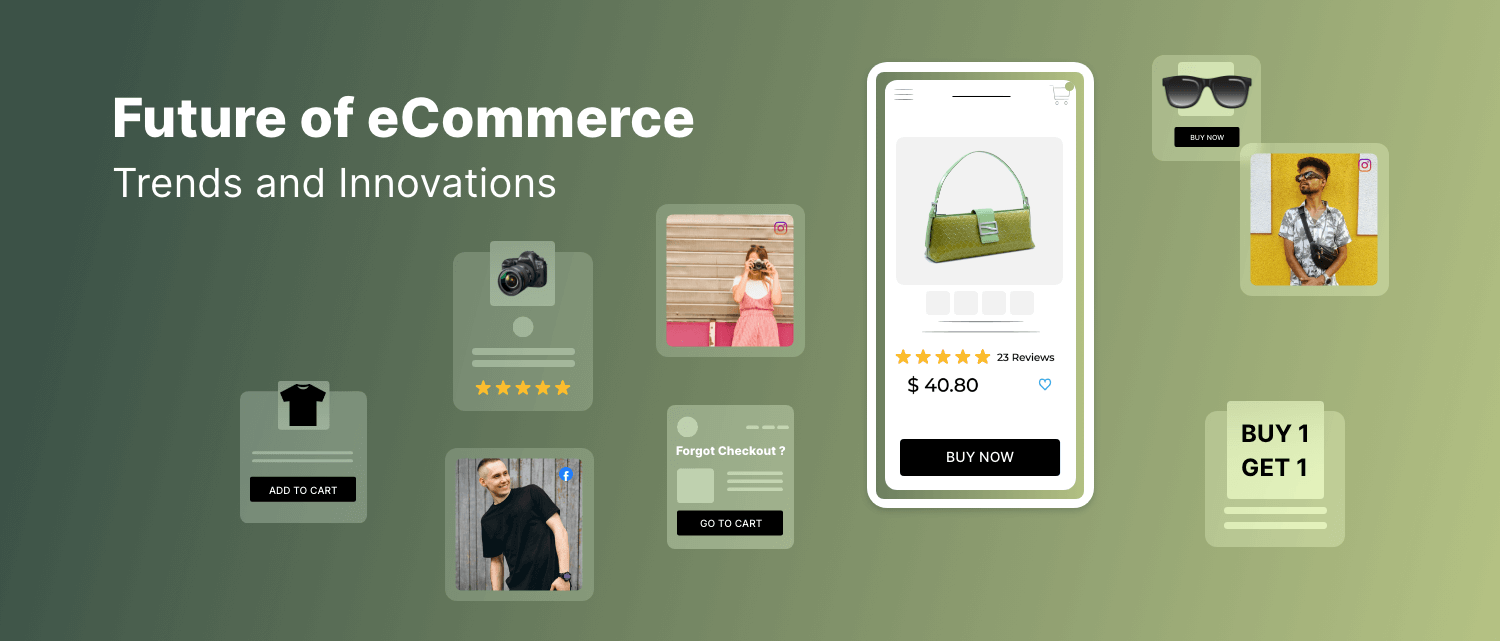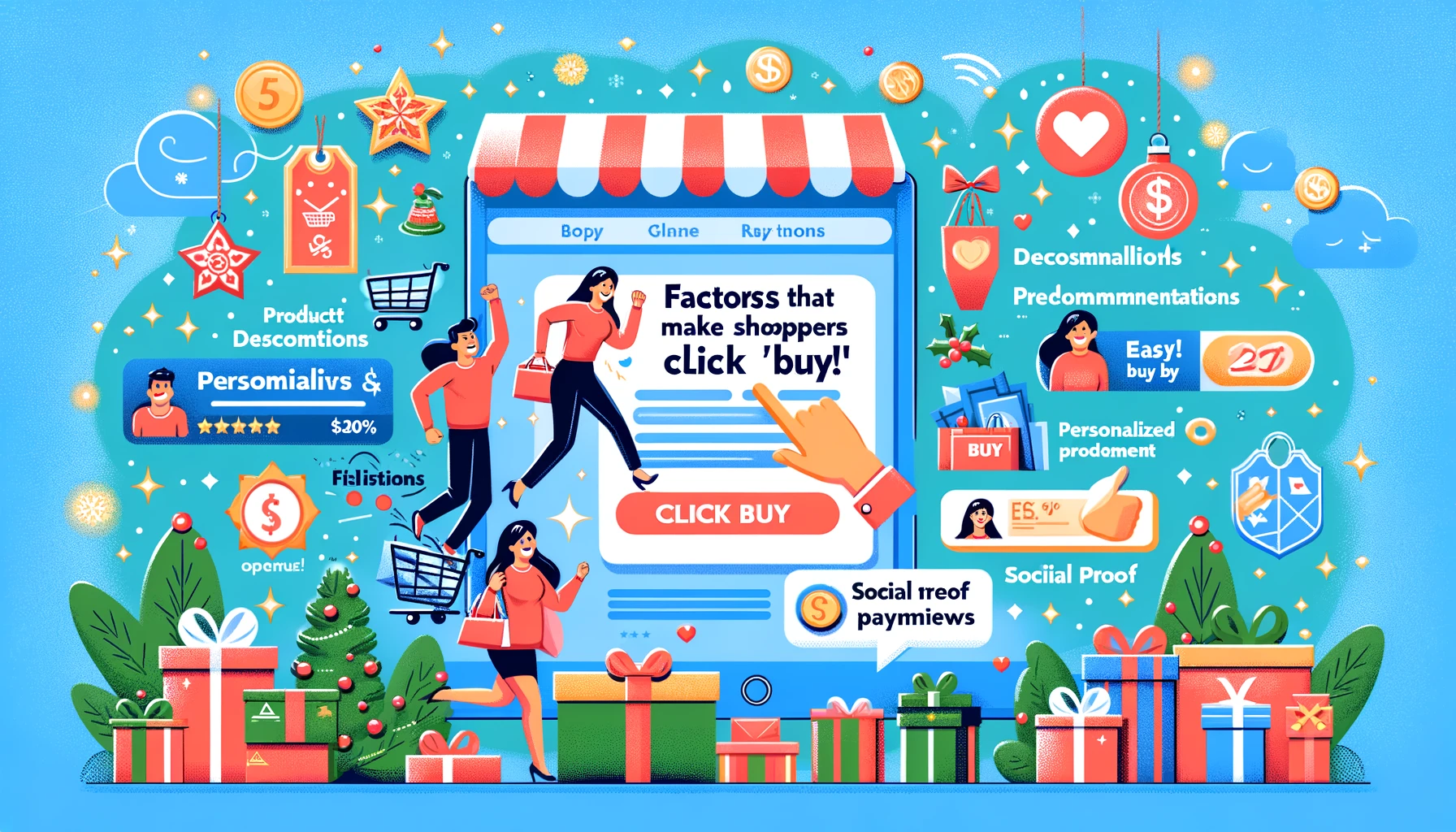The Evolution of E-Commerce
E-commerce has come a long way since the first online transaction in the mid-1990s. From simple online catalogs to sophisticated platforms offering personalized shopping experiences, the industry has undergone substantial transformation. Today, e-commerce is a multi-trillion-dollar industry, with millions of businesses worldwide leveraging online platforms to reach customers and drive sales.
Key Trends Shaping the Future of E-Commerce
1. Mobile Commerce (M-Commerce)
The rise of smartphones has significantly impacted consumer behavior, with more people using their mobile devices to shop online. Mobile commerce, or m-commerce, is expected to continue growing, driven by the increasing adoption of smartphones and advancements in mobile technology.
- Optimized Mobile Experiences: Businesses need to ensure that their websites and apps are optimized for mobile devices, providing a seamless and user-friendly experience.
- Mobile Payment Solutions: The adoption of mobile payment solutions such as Apple Pay, Google Wallet, and Samsung Pay is making transactions faster and more convenient for consumers.
- Progressive Web Apps (PWAs): PWAs combine the best of web and mobile apps, offering fast loading times, offline capabilities, and a native app-like experience.
2. Artificial Intelligence (AI) and Machine Learning (ML)
AI and ML are transforming e-commerce by enabling personalized shopping experiences, optimizing supply chains, and improving customer service.
- Personalization: AI algorithms analyze customer data to provide personalized product recommendations, enhancing the shopping experience and increasing conversion rates.
- Chatbots and Virtual Assistants: AI-powered chatbots and virtual assistants provide instant customer support, answer queries, and guide users through the purchasing process.
- Inventory Management: ML models predict demand and optimize inventory levels, reducing costs and ensuring that products are available when customers want them.
3. Augmented Reality (AR) and Virtual Reality (VR)
AR and VR technologies are revolutionizing the way consumers interact with products online, bridging the gap between physical and digital shopping experiences.
- Virtual Try-Ons: AR allows customers to virtually try on clothes, accessories, and makeup, enhancing their confidence in their purchasing decisions.
- Virtual Showrooms: VR enables businesses to create immersive virtual showrooms where customers can explore products in a 3D environment.
- Product Visualization: AR helps customers visualize how products, such as furniture and home decor, will look in their space before making a purchase.
4. Voice Commerce
Voice-activated devices like Amazon Echo and Google Home are changing the way consumers shop online. Voice commerce, or v-commerce, is becoming increasingly popular as more people use voice commands to search for products and make purchases.
- Voice Search Optimization: Businesses need to optimize their content for voice search to ensure that their products are discoverable through voice-activated devices.
- Voice-Enabled Shopping: Integrating voice-enabled shopping features into e-commerce platforms can provide a convenient and hands-free shopping experience.
5. Social Commerce
Social media platforms are becoming powerful e-commerce channels, allowing businesses to reach and engage with customers directly.
- Shoppable Posts: Platforms like Instagram, Facebook, and Pinterest offer shoppable posts, enabling users to purchase products directly from their social media feeds.
- Influencer Partnerships: Collaborating with influencers can help businesses reach a wider audience and drive sales through authentic recommendations.
- Social Media Advertising: Targeted ads on social media platforms can increase brand visibility and attract potential customers.
Innovations Driving E-Commerce Growth
1. Blockchain Technology
Blockchain technology offers several benefits for e-commerce, including enhanced security, transparency, and efficiency.
- Secure Transactions: Blockchain ensures secure and tamper-proof transactions, reducing the risk of fraud and data breaches.
- Supply Chain Transparency: Blockchain provides a transparent and traceable supply chain, allowing consumers to verify the authenticity and origin of products.
- Smart Contracts: Smart contracts automate and enforce contract terms, streamlining transactions and reducing the need for intermediaries.
2. Internet of Things (IoT)
The IoT is connecting devices and systems, enabling real-time data collection and analysis to enhance the e-commerce experience.
- Smart Warehouses: IoT devices optimize warehouse operations by tracking inventory levels, monitoring equipment, and automating tasks.
- Personalized Marketing: IoT devices collect data on consumer behavior and preferences, allowing businesses to deliver targeted marketing messages and personalized offers.
- Connected Consumer Devices: IoT-enabled devices, such as smart refrigerators, can automatically reorder products when they run low, providing a seamless shopping experience.
3. Sustainable E-Commerce
As consumers become more environmentally conscious, sustainable e-commerce practices are gaining importance.
- Eco-Friendly Packaging: Businesses are adopting eco-friendly packaging materials and practices to reduce their environmental impact.
- Sustainable Supply Chains: Companies are prioritizing sustainable sourcing and production methods to meet consumer demand for ethically-produced products.
- Carbon Offsetting: Some e-commerce platforms offer carbon offset options, allowing customers to offset the carbon footprint of their purchases.
How Businesses Can Leverage E-Commerce Trends
To stay competitive in the evolving e-commerce landscape, businesses need to adapt and innovate. Here are some strategies to leverage the latest e-commerce trends and innovations:
1. Invest in Technology
Investing in the right technologies is crucial for enhancing the e-commerce experience and staying ahead of the competition.
- AI and ML: Implement AI and ML solutions to personalize the shopping experience, optimize operations, and improve customer service.
- AR and VR: Explore AR and VR technologies to offer immersive product experiences and virtual try-ons.
- Blockchain: Utilize blockchain for secure transactions, transparent supply chains, and smart contracts.
2. Optimize for Mobile and Voice Search
Ensure that your e-commerce platform is optimized for mobile and voice search to reach a broader audience and provide a seamless shopping experience.
- Mobile-Friendly Design: Create a responsive and user-friendly mobile website or app.
- Voice Search Optimization: Optimize content for voice search by using natural language and long-tail keywords.
3. Embrace Social Commerce
Leverage social media platforms to reach and engage with customers, drive sales, and build brand loyalty.
- Shoppable Posts: Utilize shoppable posts on platforms like Instagram and Facebook to enable direct purchases.
- Influencer Marketing: Partner with influencers to promote products and reach a wider audience.
- Social Media Ads: Invest in targeted social media advertising to attract potential customers.
4. Focus on Sustainability
Adopt sustainable practices to meet consumer demand for eco-friendly products and reduce your environmental impact.
- Eco-Friendly Packaging: Use recyclable and biodegradable packaging materials.
- Sustainable Sourcing: Prioritize ethical sourcing and production methods.
- Carbon Offsetting: Offer carbon offset options for environmentally conscious customers.
The Role of Shashwat Technologies in E-Commerce Innovation
At Shashwat Technologies, we are dedicated to helping businesses navigate the evolving e-commerce landscape and leverage the latest trends and innovations. Our comprehensive suite of services includes:
1. E-Commerce Platform Development
We develop robust and scalable e-commerce platforms that provide seamless shopping experiences and drive sales.
- Custom Solutions: Tailored e-commerce platforms that align with your business goals and target audience.
- Responsive Design: Mobile-friendly and responsive designs to ensure a consistent experience across all devices.
- Integration: Integration with payment gateways, inventory management systems, and other essential tools.
2. Digital Marketing
Our digital marketing services help businesses reach and engage with their target audience, driving traffic and conversions.
- SEO and SEM: Optimize your website for search engines to improve visibility and attract organic traffic.
- Social Media Marketing: Leverage social media platforms to build brand awareness and drive sales.
- Content Marketing: Create compelling content that resonates with your audience and supports your marketing goals.
3. Technology Integration
We help businesses integrate the latest technologies to enhance the e-commerce experience and optimize operations.
- AI and ML: Implement AI and ML solutions for personalization, inventory management, and customer support.
- AR and VR: Explore AR and VR technologies to offer immersive product experiences.
- Blockchain: Utilize blockchain for secure transactions and transparent supply chains.
4. Sustainability Solutions
We provide guidance on adopting sustainable practices and leveraging eco-friendly technologies.
- Eco-Friendly Packaging: Recommend sustainable packaging materials and practices.
- Sustainable Sourcing: Help businesses prioritize ethical sourcing and production methods.
- Carbon Offsetting: Offer carbon offset solutions to reduce the environmental impact of e-commerce operations.





